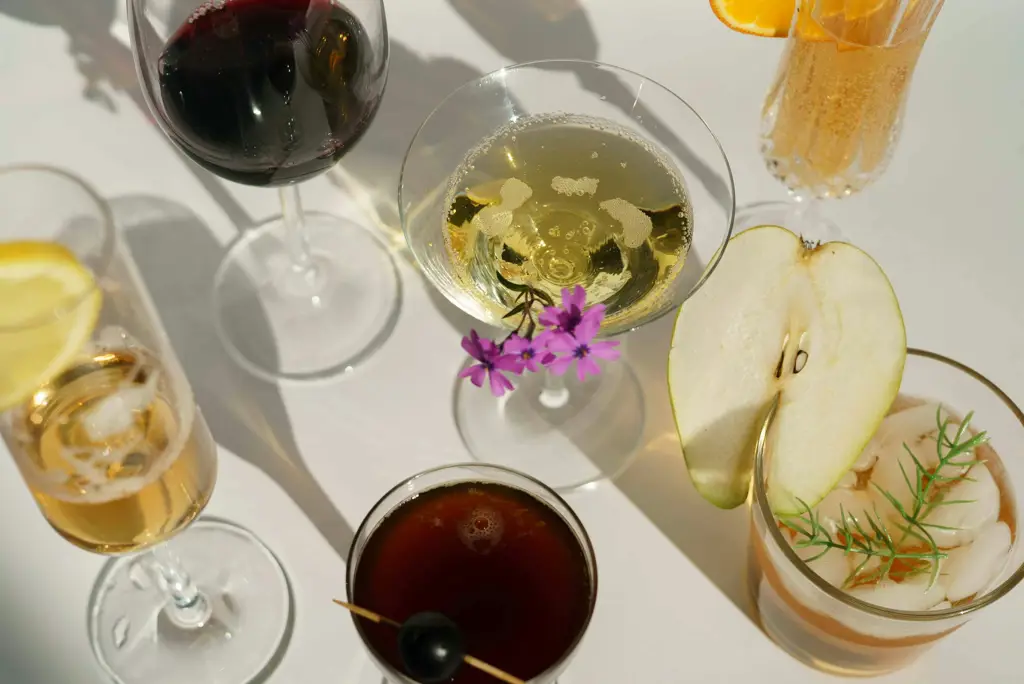Salmon, a culinary staple across the globe, boasts a rich history interwoven with cultural significance and culinary innovation. Its journey from ancient rivers to modern-day plates is a testament to its enduring appeal. Archaeological evidence suggests salmon consumption dates back millennia, with indigenous cultures in the Pacific Northwest and Scandinavia showcasing its importance in their diets and traditions for centuries. Salmon played a vital role in sustaining these communities, providing a crucial source of protein and omega-3 fatty acids, essential for health and survival. Today, the global salmon market is a multi-billion dollar industry, with farmed and wild-caught salmon satisfying the demand of billions worldwide.
The method of baking salmon, while seemingly simple, reflects a culinary evolution. While ancient preparations likely centered around simpler roasting techniques over open fires, the refinement of baking in ovens allowed for greater control over cooking time and temperature. The addition of lemon and herbs, a hallmark of Mediterranean and European cuisine, further elevates the dish, adding bright citrus notes and aromatic complexity. This combination is not merely a flavorful enhancement; it represents a synthesis of different culinary traditions, demonstrating the global reach and adaptability of this versatile fish. Interestingly, lemon’s use as a cooking ingredient gained significant traction during the Renaissance, coinciding with the rise of more elaborate culinary practices.
Today, baked salmon with lemon and herbs remains a popular choice for its health benefits and ease of preparation. A 3-ounce serving of salmon provides roughly 20 grams of protein and significant amounts of vitamin D and potassium. Its versatility also contributes to its enduring popularity; it pairs seamlessly with various side dishes, from roasted vegetables to quinoa and rice. This recipe, The Best Baked Salmon with Lemon and Herbs, aims to capture the essence of this classic dish, offering a refined and flavorful experience that honors its rich history while embracing modern culinary techniques. We’ll explore how simple ingredients and precise cooking methods can transform a humble piece of salmon into a truly exceptional meal.
Ingredients and Measurements
This recipe for The Best Baked Salmon with Lemon and Herbs yields two generous servings. Precise measurements are crucial for achieving perfectly cooked and flavorful salmon. Using a kitchen scale for weighing ingredients, especially the salmon fillets, is highly recommended for consistency.
Salmon Fillets: 2 (6-ounce) salmon fillets, skin on or off. Choose high-quality, fresh salmon fillets. Look for fillets with vibrant pink-orange flesh and a fresh, clean smell. If using frozen salmon, ensure it’s completely thawed before baking. Patting the fillets dry with paper towels before seasoning is vital for achieving a crispy skin (if using skin-on fillets) and even browning.
Lemon: 1 large lemon. You’ll need both the juice and the zest. For the zest, use a microplane or a fine grater to obtain about 1 tablespoon of lemon zest. Avoid getting any of the bitter white pith under the zest. For the juice, you’ll need approximately 2 tablespoons of freshly squeezed lemon juice. Freshly squeezed lemon juice offers the best flavor and aroma.
Fresh Herbs: We recommend a combination of fresh herbs for a complex flavor profile. Use approximately 2 tablespoons chopped fresh herbs in total. A suggested combination includes: 1 tablespoon chopped fresh dill, 1/2 tablespoon chopped fresh parsley, and 1/2 tablespoon chopped fresh thyme. Adjust the herb quantities to your personal preference. You can substitute with other herbs like chives, oregano, or tarragon. Ensure your herbs are fresh and finely chopped for even distribution.
Olive Oil: 1 tablespoon extra virgin olive oil. Use a high-quality extra virgin olive oil for the best flavor. This oil will not only add flavor but also help to keep the salmon moist during baking.
Seasoning: 1/2 teaspoon sea salt and 1/4 teaspoon freshly ground black pepper. Adjust the seasoning to taste, depending on the saltiness of your salmon and personal preference. Freshly ground black pepper provides a more intense flavor compared to pre-ground pepper.
Optional additions: Consider adding a few thin slices of garlic (about 2 cloves) to the baking dish for extra flavor. A sprinkle of red pepper flakes can add a touch of heat. For extra moisture, a tablespoon of white wine or chicken broth can be added to the baking dish.
Equipment List
This recipe for The Best Baked Salmon with Lemon and Herbs requires minimal equipment, but choosing the right tools will significantly enhance your cooking experience and the final result. Here’s a detailed list of everything you’ll need:
Baking Dish: A 9×13 inch baking dish is ideal for a standard portion of salmon fillets. However, you can adjust the size based on the quantity of salmon you’re cooking. If using individual fillets, smaller oven-safe dishes (ramekins or individual baking dishes) are perfectly suitable. Avoid using non-stick cookware for baking salmon; the high heat can damage the non-stick coating. Opt for glass, ceramic, or a seasoned cast iron baking dish for best results.
Measuring Cups and Spoons: Accurate measurements are crucial for achieving the perfect balance of flavors. Invest in a reliable set of measuring cups (1 cup, ½ cup, ⅓ cup, ¼ cup) and measuring spoons (1 tablespoon, 1 teaspoon, ½ teaspoon, ¼ teaspoon). Using a kitchen scale for more precise measurements, particularly for the salmon fillets, is highly recommended.
Sharp Knife: A sharp knife is essential for preparing the salmon fillets. A good quality chef’s knife (8-10 inches) will make clean, precise cuts, ensuring even cooking. A dull knife will crush the salmon, leading to uneven cooking and a less appealing presentation. Always remember to use a cutting board to protect your countertop and keep your knife sharp for optimal performance.
Baking Sheet (Optional): While not strictly necessary if using a baking dish, a baking sheet can be used as an extra precaution to catch any spills or drips in the oven. This is especially helpful if you’re using smaller individual baking dishes. Line the baking sheet with parchment paper for easy cleanup.
Citrus Juicer (Optional): While you can manually juice the lemon, a citrus juicer will make the process quicker and more efficient, extracting more juice from the fruit. A hand-held juicer is a convenient and inexpensive option.
Herb Scissors (Optional): Herb scissors are a great tool for finely chopping fresh herbs. They allow for precise cutting and minimize waste. But if you don’t have herb scissors, a sharp knife will work just fine. Remember to wash your herbs thoroughly before chopping.
Oven Mitts or Gloves: Essential for safely removing the hot baking dish from the oven. Always use oven mitts or gloves to protect your hands from burns.
Serving Utensils: Spatula or tongs for serving the baked salmon. Choose utensils that are heat-resistant to prevent burns.
Preparation of Salmon Fillet
Preparing your salmon fillets correctly is crucial for achieving perfectly baked, flaky, and moist results. Begin by selecting high-quality salmon fillets, ideally skin-on for optimal flavor and texture retention. Aim for fillets that are approximately 6-8 ounces each, allowing for even cooking. Avoid fillets that are excessively thin or thick; thinner fillets will cook more quickly and may dry out, while thicker fillets may require longer cooking times, potentially leading to overcooking.
Once you’ve chosen your fillets, gently rinse them under cold running water. Pat them thoroughly dry with paper towels. This step is essential for achieving a good sear and preventing excess moisture from steaming the salmon during baking. Leaving the fillets damp will result in a steamed, rather than baked, texture.
Now, it’s time to season. For two 6-8 ounce salmon fillets, you’ll need approximately 1 teaspoon of kosher salt and ½ teaspoon of freshly ground black pepper. Use kosher salt as it’s less dense than table salt, allowing for more even seasoning. Gently sprinkle the salt and pepper evenly over both sides of the fillets. Avoid over-seasoning, as this can overpower the delicate flavor of the salmon.
For added flavor, consider adding other seasonings. A squeeze of fresh lemon juice (about ½ a lemon per fillet) before seasoning can enhance the salmon’s natural taste. You can also add other herbs and spices, such as dill, thyme, or paprika. Experiment with different combinations to find your perfect flavor profile. However, remember that less is often more. Remember to gently pat the fillets dry again after adding any liquid ingredients.
Finally, before placing the fillets in the baking dish, consider scoring the skin (if using skin-on fillets) with a sharp knife. Make shallow diagonal cuts across the skin, about ½ inch apart. This will help the skin crisp up during baking and prevent it from curling. This step is optional, but highly recommended for achieving perfectly crispy skin. Now your salmon fillets are ready for baking!
Preparation of Lemon and Herbs
The vibrant flavors of lemon and fresh herbs are key to this recipe’s success. Proper preparation ensures optimal aroma and taste, enhancing the salmon’s delicate texture. Begin by selecting high-quality ingredients; the freshness of your herbs will significantly impact the final dish.
For this recipe, we’ll use one medium-sized lemon (approximately 2 ounces). Thoroughly wash the lemon under cold running water to remove any pesticides or dirt. Scrub the lemon’s rind gently with a clean brush if necessary. Then, cut the lemon in half. One half will be juiced, while the other will be sliced into thin rounds (about ⅛ inch thick) for garnish and added flavor during baking.
Next, prepare your herbs. We recommend using a combination of fresh dill, parsley, and thyme. Approximately 2 tablespoons of chopped fresh dill, 1 tablespoon of chopped fresh parsley, and 1 teaspoon of fresh thyme leaves are ideal. If using dried herbs, remember that their flavor is more concentrated, so reduce the quantity by about one-third. For example, you would use approximately ⅔ of a tablespoon of dried dill.
Properly chopping the herbs is crucial. Aim for a consistent, relatively fine chop to ensure even distribution of flavor throughout the salmon. Avoid over-chopping, as this can bruise the herbs and diminish their fresh aroma. A sharp knife is essential for clean cuts. If you have a herb stripper, this tool can efficiently remove the leaves from the stems of herbs like thyme, saving you time and effort.
Once the herbs are chopped, gently combine them in a small bowl. You can add a pinch of salt and freshly ground black pepper to enhance their flavor further. Avoid over-seasoning at this stage, as the salmon will also be seasoned separately. This herb mixture will be generously sprinkled over the salmon before baking, ensuring every bite is infused with fresh, herbaceous goodness.
Finally, juice the remaining lemon half. You should obtain approximately 2-3 tablespoons of fresh lemon juice. Reserve this juice for basting the salmon during baking; this will add moisture and intensify the lemony flavor profile. You can also add a tablespoon or two of the lemon juice to the herb mixture for an extra burst of citrus.
Baking Preparation
Before you begin baking your salmon, proper preparation is key to achieving perfectly cooked, flaky results. This section details the crucial steps to ensure a delicious and visually appealing dish.
First, preheat your oven to 400°F (200°C). This ensures the salmon cooks evenly and doesn’t become dry. While the oven heats, prepare your baking dish. A small, oven-safe dish, approximately 8×8 inches, is ideal for a single salmon fillet or two smaller fillets. If using a larger fillet, adjust the baking time accordingly.
Next, prepare your salmon fillet(s). Pat the salmon dry with paper towels. This removes excess moisture, which can prevent proper browning and crisping. For a 6-ounce salmon fillet, you’ll need about 1 tablespoon of olive oil. Gently rub the olive oil over the skin side and the flesh side of the fillet. Don’t be shy with the oil; it helps the salmon cook evenly and adds richness.
Now, let’s prepare the lemon and herbs. Thinly slice one lemon. You’ll need approximately 3-4 lemon slices per fillet. For the herbs, fresh herbs are always best, but dried will work in a pinch. Use approximately 1 tablespoon of chopped fresh herbs, such as dill, parsley, and thyme. If using dried herbs, use about 1 teaspoon. A combination of these herbs works particularly well with salmon.
Arrange the lemon slices evenly over the bottom of your prepared baking dish. This will create a flavorful base and prevent the salmon from sticking. Place the prepared salmon fillet(s) on top of the lemon slices. Gently tuck the herb mixture under and around the salmon fillet. This ensures the herbs infuse the salmon during cooking. Season generously with salt and freshly ground black pepper. A good rule of thumb is about 1/4 teaspoon of salt and 1/8 teaspoon of pepper per fillet.
For extra flavor, consider adding a drizzle of white wine or lemon juice to the baking dish before placing the salmon in the oven. This adds acidity and moisture, contributing to a more flavorful dish. Remember to adjust baking time based on the thickness of your fillet; a thicker fillet will require longer baking time. Always use a meat thermometer to ensure the salmon reaches an internal temperature of 145°F (63°C) for optimal food safety and doneness.
Cooking Techniques and Timing
This recipe utilizes a simple yet effective baking method to ensure perfectly cooked salmon every time. The key is to achieve a flaky, moist interior while developing a slightly crisp skin. We’ll be using a combination of high heat for initial searing and lower heat for even cooking.
Preheat your oven to 400°F (200°C). This is crucial for achieving a good sear on the salmon skin and ensuring even cooking throughout. A preheated oven distributes heat consistently, preventing uneven cooking and ensuring a perfectly cooked center.
Prepare your baking dish: Line a baking sheet with parchment paper for easy cleanup and to prevent sticking. This also helps with even heat distribution. Lightly grease the parchment paper with olive oil or cooking spray.
Season generously: Pat your salmon fillets dry with paper towels. This helps the skin crisp up nicely. Season both sides generously with salt and freshly ground black pepper. Approximately 1/2 teaspoon of salt and 1/4 teaspoon of black pepper per 6-ounce fillet is a good starting point, but adjust to your taste.
Arrange and add aromatics: Place the salmon fillets skin-side down on the prepared baking sheet. Arrange thin lemon slices and fresh herbs (such as dill, thyme, or parsley – about 1 tablespoon per fillet) over the salmon. A drizzle of olive oil (about 1 tablespoon per fillet) will add moisture and flavor.
Baking time: The baking time will depend on the thickness of your salmon fillets. For 6-ounce fillets, about 12-15 minutes is ideal. For thicker fillets (8 ounces or more), you may need to increase the baking time to 18-20 minutes. Use a meat thermometer to ensure the salmon is cooked through. The internal temperature should reach 145°F (63°C).
Checking for doneness: The salmon is cooked when it flakes easily with a fork and the internal temperature reaches 145°F (63°C). Overcooked salmon will be dry and tough. If you’re unsure, it’s always better to slightly undercook it, as it will continue to cook slightly from residual heat.
Rest and serve: Once cooked, remove the salmon from the oven and let it rest for a few minutes before serving. This allows the juices to redistribute, resulting in a more tender and flavorful fillet. Serve immediately and enjoy!
Important Note: Cooking times may vary depending on your oven. Always monitor the salmon closely and use a meat thermometer to ensure it reaches the safe internal temperature.
Recommendations for The Best Baked Salmon with Lemon and Herbs
This recipe yields a delicious and healthy baked salmon dish. For optimal flavor and texture, we recommend using fresh, high-quality salmon fillets. Ensure the salmon is properly thawed before baking to ensure even cooking. Adjust baking time depending on the thickness of your fillets; a meat thermometer inserted into the thickest part should register 145°F (63°C) for doneness.
Serving Suggestions: This baked salmon is incredibly versatile. Serve it as a main course with a simple side salad of mixed greens, cherry tomatoes, and cucumbers, dressed with a light vinaigrette. Alternatively, roasted asparagus or green beans would be delightful accompaniments. For a heartier meal, consider serving it with creamy mashed potatoes or quinoa. A squeeze of fresh lemon juice just before serving brightens the flavors.
Storage: Leftover salmon should be stored in an airtight container in the refrigerator for up to 3 days. Do not refreeze cooked salmon. To reheat, gently warm in a microwave or oven until heated through. Avoid overcooking, as this can dry out the fish.
Complementary Dishes: The bright, lemony flavors of this salmon pair well with a variety of dishes. Consider serving it with a side of lemon-dill sauce, a vibrant salsa, or a simple pesto. A light and refreshing white wine, such as Sauvignon Blanc or Pinot Grigio, would complement the dish beautifully.
Nutritional Information (per serving, approximate): Calories: Approximately 250-300 (depending on salmon size and added ingredients); Protein: 25-30g; Fat: 15-20g (mostly healthy omega-3 fatty acids); Carbohydrates: 2-5g; Sodium: Varies depending on seasonings used. Note: This is an estimate and the actual nutritional content may vary. For precise nutritional information, use a nutrition calculator with your specific ingredients and portion sizes.
Enjoy! We hope you savor every bite of this flavorful and healthy baked salmon recipe.





